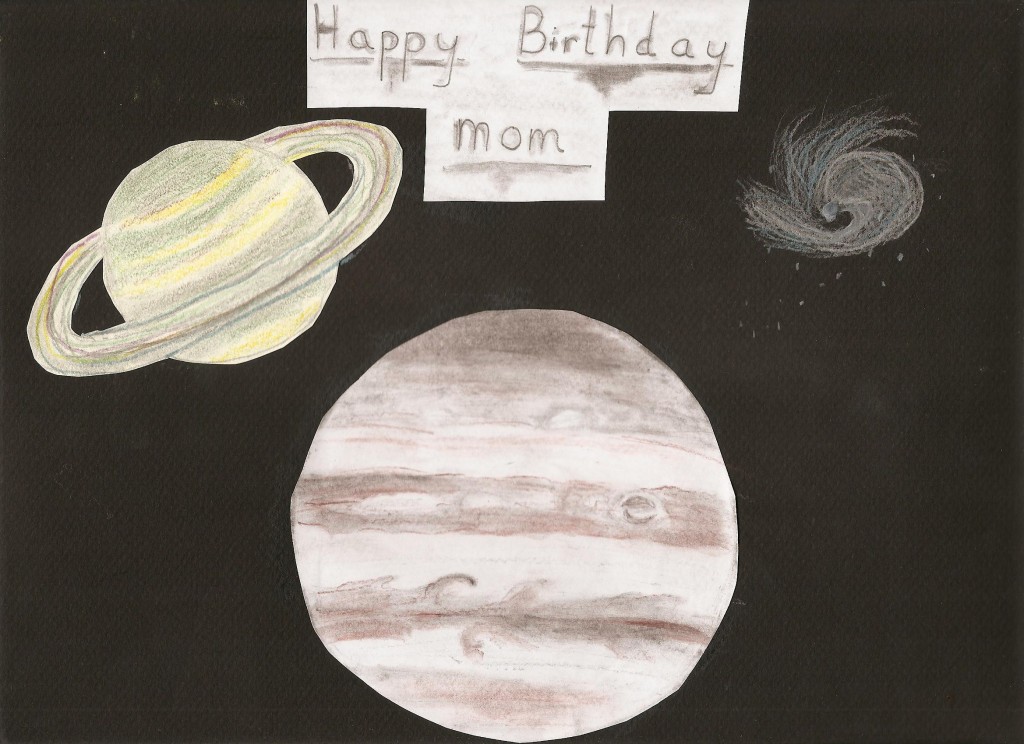
I awoke to my birthday this morning and was presented a beautiful card my 10 year old daughter Maia made for me. The Jupiter, M66 and Saturn were sketched from pictures she saw in the book “Astronomical Sketching”.
Best birthday present yet!
Thia
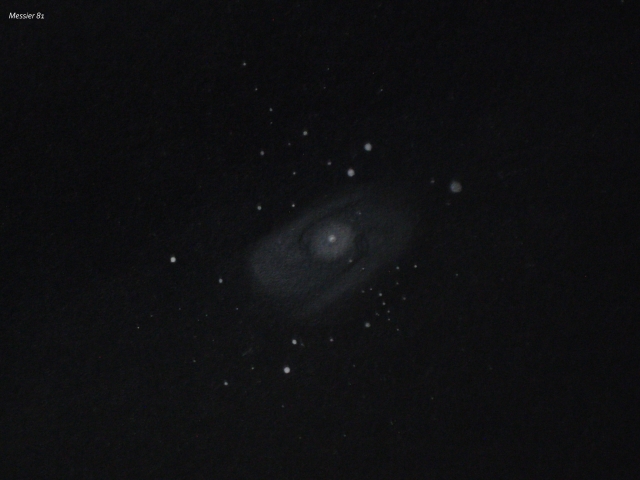

Date: February 25th, 2012
Location: West Desert, Utah
Time: 07:15 UT and 07:45 UT approx.
Equipment: XX14i, 10mm, 5mm Pentax XW;
Conditions: Antoniadi I
Objects: Messier 81 & 82, Spiral Galaxies in Ursa Major
Sketches done using the Mellish Method with the contrast adjusted in GIMP.
Two of my last several objects of this night were M81 and M82 in Ursa Major. I included them because of the Light Pollution versus Dark Sky comparisons I am wanting to do. Now I just need to the sky to cooperate at home! Nothing but snow that melts the next day and clouds since. M82, Bode’s Galaxy in Ursa Major. Pretty close to spot on how I saw it.
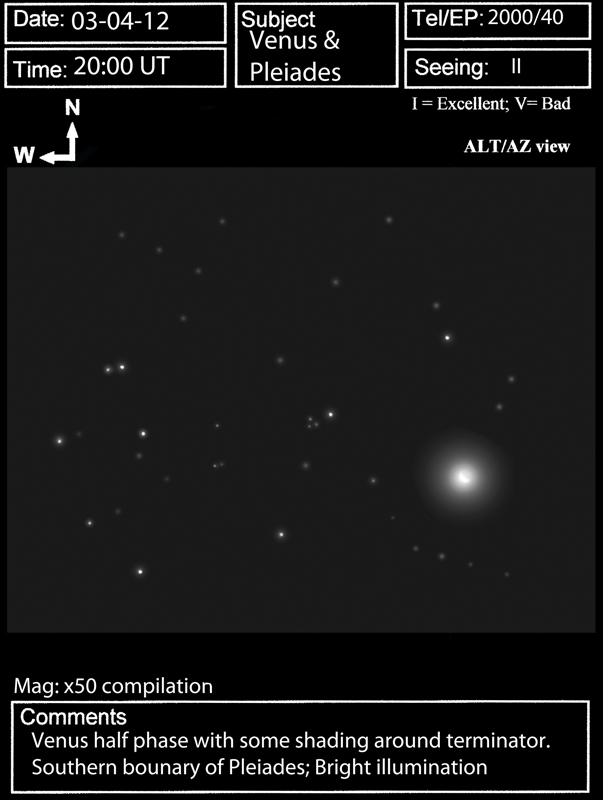
Object Name: Planet (Venus)
Object Type: Venus in the Pleiades
Location: Bristol
Date 3rd April 2012
Media: Drawn at scope with graphite pencil on white paper then scanned and processed using CS4.
I used an 8″ SCT with a 40mm wide field of view eyepiece. Constructed the final scene via 5 eyepiece sketchs and composited them together. Scans into Photoshop and then remastered.
Weather was good.
Venus was quite dazzling and washed out many of the fainter stars in the M45 cluster, almost as if to announce that she was the real “star”! Venus itself under higher magnification revealed some dusky marks around the terminator. The phase of Venus was approximately half.
Thanks
Chris Lee
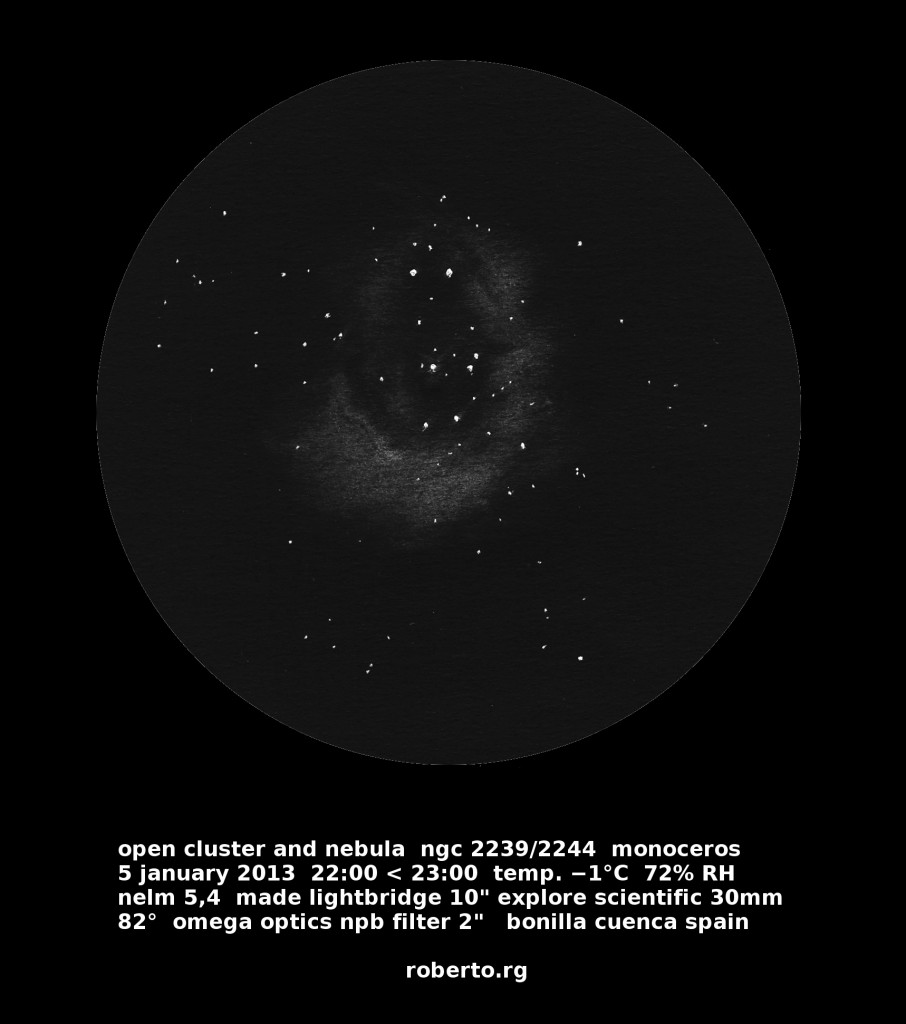
hi asod,I send this last observation of the Rosette Nebula.the sky that day was not very transparent,but after an hour of observation I could see many details and translate to paper.
the details are subtle and contrasted with this great filter.greetings and thanks
Object Name: ngc 2239/2244/2238 rosette nebula
Object Type: open cluster and bright nebula
Location: bonilla cuenca / spain
Date: 5 january 2013 hour 22:00 < 23:00
temp. -1 ° C humidity 72% nelm 5,4 bortle scale 3/9
Media: graphite pencil and gimp tools
optical equipment: meade lightbridge 10'' & explore scientific 30mm 82°
42x increases 1,9° field 6mm exit pupil
omega optics npb filter
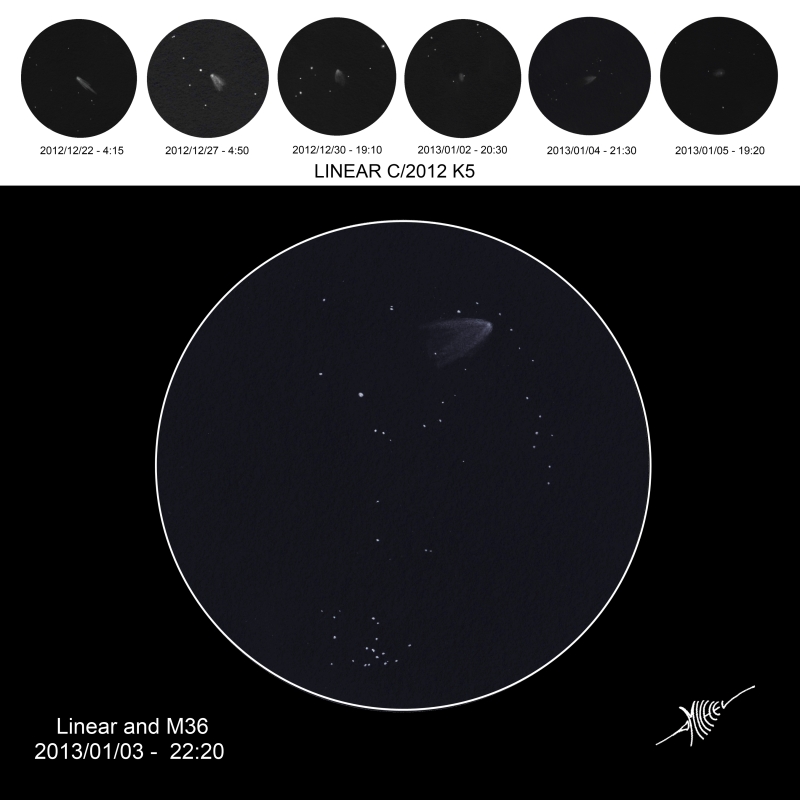
Hi Asod, all my best wishes for 2013 and a lot of nice daily sketches !
Object Name (LINEAR C/2012 K5)
Object Type (Comet)
Location (Val d’Issole – Provence – France)
Date ( from Dec. 2012-22 to Jan. 2013-05)
Media (graphite pencil, white paper, Paint.net for inversion )
In 40 years, I have already seen approximately twenty comets, LINEAR remains modest, but for me, this is the prettiest small one I observed.
To make this sketch I watched more than 12 nights with 1 to 2 hours per night to see and draw it. At year-end 2012, we had to wait early in the morning, because of the position and to avoid moon light. After the new-year passage it was more comfortable, the comet was walking near the zenith.
I evaluated the best magnitude end 2012 to 8.0 + / – 0.3. Today Jan 05 she fades out to 10 +/- 0.5.
Thanks to my friend’s astronomers in the region, I observed in four refractors, 80/480, 127/820, 102/1000, 140/1120 and two telescopes 114/500, 250/1000.
The comet was always relatively easy to catch with a wide field eyepiece, 40mm or 25mm.
The observation sites were distributed; we could compare the sky quality of Rocbaron, Rians, Flassans and Néoules.
What is interesting in the sequence is to see that near January 2nd the comet passed from one side of the ecliptic to the other, so 1 and 2 January’s tail and coma were not really separated. At the beginning of the sequence the comet follows her tail; Jan. 2 tail was behind the coma, aligned with us on earth. After that the comet flies before her tail. It’s a bit like a small cat playing with its tail.
Time is given in UT.
Thanks for taking the time to look at my sketch and a lot of clear skies to you all for 2013 !
Michel Deconinck
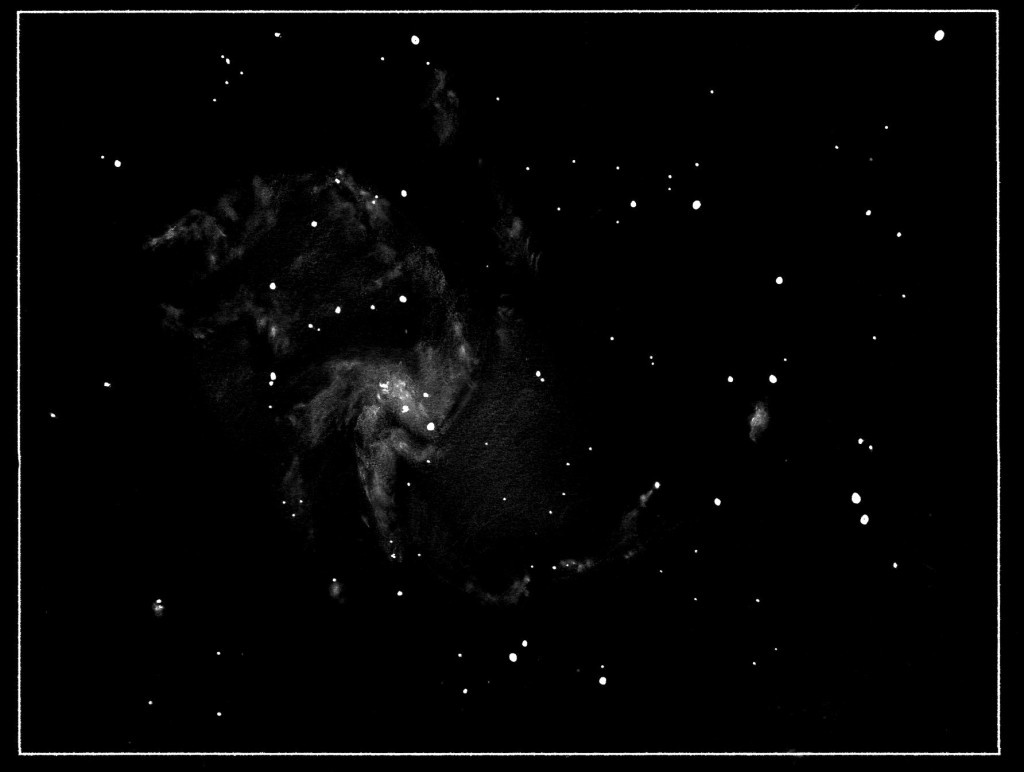
A view of M33 with my 10 inch reflector plus a watec 120N+. I used a focal reducer to bring the focal ratio to about 2.5 so I could fit the entire galaxy in the field. I was amazed at the amount of detail visible, very knotty arms plus the bright nebula NGC 604 was easily seen.
Took a while to sketch but patience is everything in this game 🙂
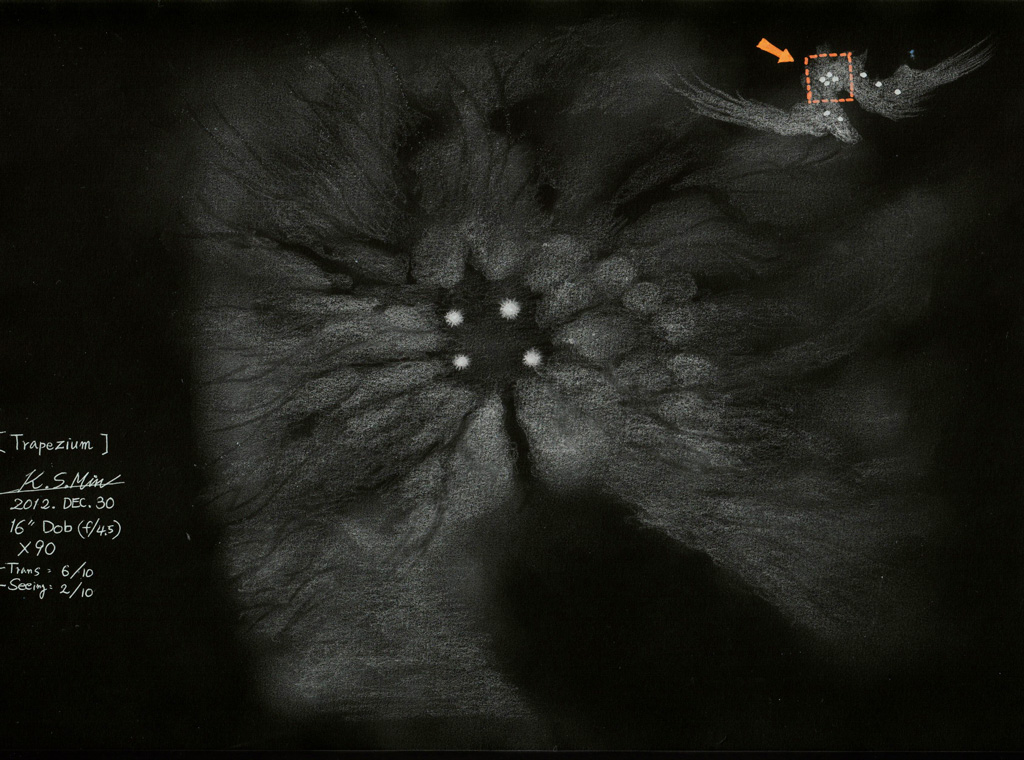
My main observing objects are moon & planets, and I do not invest much time in observing DSO.
But whenever winter season comes, I used to aim my telescopes at the Great orion nebula .
This December, I have observed it 3 times ( 3 day ) with a 16 inch Meade starfinder Dobson , and unfortunately all 3 nights were in bad seeing, the 4 stars in the Trapezium were looked like fat cottons.
Even this seeing condition with a little-bit light polluted site , environs nebula structures were seen quite well .
—————–
16 inches dob reflector x 90
date; 3 weekends in DEC. 2012
location; at backyard home in South korea
media; graphite pencils , a white A4 printer paper
inverted image